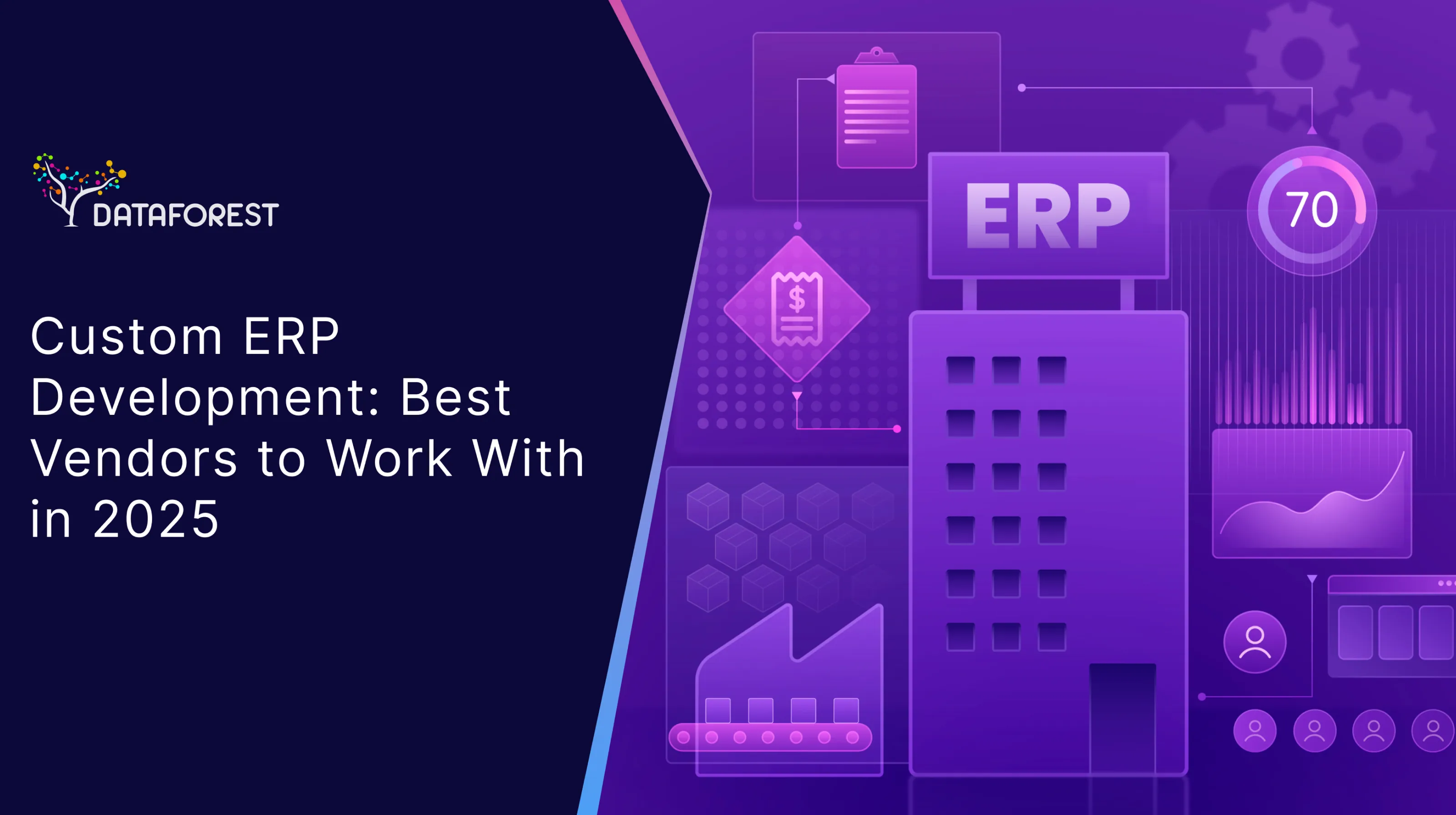Home page / Custom Retail Customer Data Platform Development
Custom Retail Customer Data Platform Development
Turn fragmented retail data into actionable insights with a custom CDP. We build platforms that unify your data to power hyper-personalized marketing, smarter inventory decisions, and faster market response – driving higher sales and ROI.




PARTNER

PARTNER
FEATURED IN

How Custom Retail Customer Data Platforms Drive Growth and Personalization
From fragmented data and generic offers to manual operations that slow down marketing execution, our custom-built customer data platform solutions tackle the real barriers to retail growth – unifying your data, enabling real-time AI-powered personalization, and automating manual workflows.
Retailers struggle with disconnected customer data scattered across e-commerce, mobile apps, in-store POS, social media, and email platforms, preventing a unified customer view and limiting marketing effectiveness. A custom-built customer data platform integrates your entire retail ecosystem, unlocking real-time insights, personalized engagement, and smarter decisions to drive growth.
- Integrate omnichannel data into a retail customer data platform as a single source of truth
- Connect a customer data platform for retail with marketing tools via custom APIs to trigger real-time campaigns based on behavior and lifecycle stage
- Enable 360° customer profiles using a modern customer data management platform, and drive better personalization and campaign ROI
Without real-time segmentation and AI capabilities, retailers miss opportunities to engage customers with relevant offers, reducing conversion rates and average order value. Drive higher sales, engagement, and loyalty with a custom customer data platform built for your unique retail needs, delivering AI-powered personalization.
- Implement AI-powered segmentation within a custom CDP solution to cluster customers by behavior, value, and intent
- Deliver dynamic product recommendations and tailored offers across web, mobile, and marketing channels instantly using a robust customer data platform retail stack
- Increase campaign engagement and AOV by 15–25%, improving retention through personalized experiences with a CDP in retail.
- Automate workflows within your customer data platform for retail to centralize data, auto-tag behaviors, and build segments in real time
- Generate on-demand reports through a modern customer data platform architecture to reduce manual effort and human error
- Save 50–70% of internal ops time, accelerating campaign execution with a scalable customer data platform solution.
Marketers spend hours analyzing customer journeys manually, slowing down campaign improvements and missing conversion opportunities. Boost revenue and conversions with a custom customer data platform built for your needs, automating journey mapping to free up your team and drive smarter decisions.
- Leverage AI-powered journey mapping within your customer data platform for retail to analyze paths automatically
- Identify friction points and optimization opportunities using a predictive customer data management platform
- Enable data-driven improvements with CDP in retail to increase conversions and customer satisfaction
Retailers lose customers without knowing why, and lack early warning systems to identify and retain at-risk customers. Boost revenue and retention with a custom customer data platform built for your needs, automating churn prediction and personalized retention campaigns to keep customers engaged.
- Use predictive analytics within your retail customer data platform to identify customers likely to churn
- Trigger personalized retention campaigns automatically based on churn risk scores powered by CDP retail tools
- Proactively reduce churn, increasing customer lifetime value and loyalty with support from top customer data platform companies
Real-Life Examples
CDP for Retail Tech Schema

.webp)
What a Retail CDP Is Good For
Fashion & Apparel
- Map buying patterns across seasons, sizes, and styles using the customer data platform retail.
- Trigger style-based emails from browsing or returns with personalized marketing in retail.
- Spot stockouts or slow movers before they hit margins.
Grocery & FMCG
- Build household-level profiles from loyalty and receipt data through CDP integration.
- Push weekly offers based on recurring purchases.
- Detect lapses in visits before churn becomes a number using predictive analytics for retail.
Electronics & Appliances
- Track product research across sessions and devices using a customer data platform solution.
- Serve up support content or upsell offers post-purchase.
- Segment by upgrade cycles, not just demographics, to improve customer loyalty in retail.
Home & Furniture
- Re-engage customers when carts stall on expensive items via CDP for retail, providing real-time customer insights.
- Personalize based on space size, not just taste.
- Catch patterns in returns or shipping issues by region.
Beauty & Personal Care
- Recommend based on product usage intervals with CDP retail.
- Retarget with variant shades or seasonal editions.
- Connect online behaviors with in-store sampling through customer data platform companies.
Luxury Retail
- Merge boutique visits with a digital footprint using customer data platform solutions.
- Enable concierge-level personalization, not spam—all with unified customer profiles.
- Track micro-signals to prevent customer loss silently.

We Build Retail CDPs That Boost Sales and Revenue
Turn fragmented data into actionable customer intelligence to increase conversions and retention.
Building a CDP Solution for Retail

Map the Chaos
Inventory every data source—POS, e-commerce, CRM, loyalty, app, ads. Figure out where the data overlaps, contradicts or disappears. You can’t fix what you haven’t mapped, and no, it’s not clean.
01

Set the Core Structure
Decide whether to use customer data platform providers, build one yourself, or combine tools. Establish how identities will be matched across platforms and channels. Clarify what the CDP architecture will control: collection only or both collection and orchestration?
02

Clean and Connect the Data
Normalize formats, deduplicate customers, and synchronize every source in near real-time. Automate cleaning, but don’t trust it blindly—verify with real records. Bad data leads to wrong messages and lost trust. Fix it early with a customer data management platform.
03
Build Unified Customer Profiles
Combine all interactions into a single profile per customer, both digital and offline. Include behavior, transaction history, product returns, and support tickets. This customer data platform for retail is your new source of truth. It has to be solid.
04

Layer in Intelligence
Use machine learning to segment, predict churn, and score customer lifetime value within your customer data platform solution. Don’t add models just to say you have them—they must lead to action. Test until the outputs are practical, not just technically impressive.
05

Connect to Campaigns
Plug the CDP solution into your marketing stack, including email, SMS, web, ads, and in-store. Trigger personalized actions when they matter, not 12 hours too late. Give marketers control without making them depend on engineers.
06

Watch, Learn, Adjust
Track how campaigns perform, where customers drop off, and what segments convert. Feed outcomes back into the models and refine them on a weekly basis. This step never ends—if it does, the customer data platform for retail becomes useless.
07
Customer Data Platform Solutions Related Articles
All publicationsFAQ For Customer Data Platform Consulting
How long does it typically take to implement a CDP solution and see measurable results?
Setting up a basic customer data platform solution can take 3–6 months, depending on your current data situation. Measurable results typically begin to appear within the first 90 days after activation, particularly in segmentation and targeting. Significant improvements—such as reduced churn or increased CLV—typically emerge after six months of consistent use.
How does predictive churn prevention actually work, and what’s the accuracy rate?
It utilizes past behavior patterns (frequency, purchase gaps, and engagement drops) to identify customers likely to leave. The best customer data platform vendor models identify risk up to 90 days in advance with 70–85% accuracy, provided they are fed clean data. It’s not perfect, but it gives you time to act before the customer is already gone.
Can you quantify the impact on marketing efficiency and campaign performance?
Clients typically experience 20–40% higher conversion rates from more targeted campaigns using customer data platform solutions. There’s often a 25–30% drop in spending wasted on uninterested segments. The real win is doing more with the same budget—not spending more.
What happens to our existing customer data and marketing campaigns during migration?
Data is mapped, cleaned, and migrated in phases to avoid disruption. Campaigns can keep running, but innovative teams use the transition to cut dead weight. Most customer data platform companies offer parallel testing, allowing you to validate before making a complete switch.
How sophisticated is the journey mapping, and can it identify micro-moments that impact conversion?
It maps user behavior across channels—site visits, cart events, store scans, and more. The customer data platform architecture can identify friction points, such as form drop-offs, price hesitations, or mobile-specific bounces. It’s only valid if someone acts on those findings—tools don’t fix UX by themselves.
Why do retailers specifically need CDP solutions compared to other industries?
Retailers juggle high transaction volume, multi-channel behavior, and short loyalty windows. A customer data platform for retail helps track customers through fragmented journeys—across stores, the web, apps, and ads —to build retail data unification. Without it, data stays siloed, and you miss the complete picture of your customer.
What are the main business problems that CDP solves for retail companies?
It reduces waste by sending more targeted campaigns to smaller, more intelligent segments. It reveals behavior patterns that aid in inventory management, customer churn, and promotional timing. It provides teams with a way to trust the data and act on it quickly without relying on guesswork through customer data platform consulting.
Let’s discuss your project
Share project details, like scope or challenges. We'll review and follow up with next steps.


.svg)








.svg)
.svg)
.svg)
.svg)



.webp)
.webp)
.webp)
.webp)


.svg)



.svg)


.svg)








.webp)













